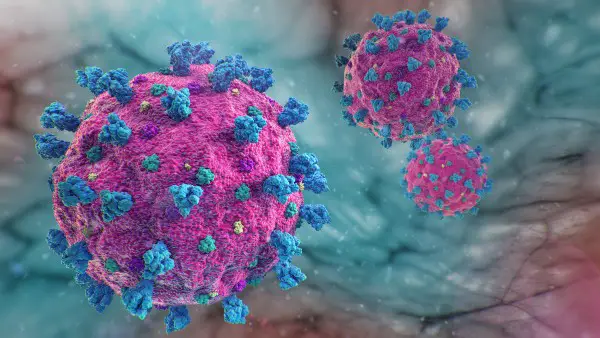
We have a bit of human clinical data from the Eli Lilly/Abcellera collaboration to make a monoclonal antibody therapy against the coronavirus. A full paper is coming soon, the press release says, but for now it looks like this is all we have to go on.
It’s a mixed assortment of news. On the cheerful side, in mild-to-moderate recently diagnosed patients, a dose of 2800mg of antibody did lower viral loads, and there were no adverse events. The prespecified mark was Day 11, but it appears that pretty much everyone in the trial, including those getting placebo, had very low viral titers by that point. Further analysis showed that the antibody treatment also lowered it at Day 3 (by an unspecified amount) and lowered the number of patients with persistently high virus at later time points (although we don’t know how many people were in that category). The other good news is that another prespecified endpoint (number of patients who went on to hospitalization) seems to have been significantly lower in the treatment group (1.7% of them as opposed to 6% in the placebo/standard of care group). The release notes that most of the hospitalizations were in patients with known risk factors, which suggests that that antibody might be best targeted towards these groups.
But now the less good news. The trial looked at 3 doses: 700mg, 2800mg, and 7000mg, and there was no dose-response: only the middle dose worked. That’s worrisome; I’m having a hard time figuring why the higher dose would not have shown effects (and I’ll bet that Lilly is, too). This was not a tiny trial, but it wasn’t huge either (about 300 in the treatment group and 150 in the control), and there’s a nagging worry that the effect size just wasn’t large enough to see a solid answer in a group this size. I would have to think that Lilly expected better, and that’s why the trial was designed with this number of patients. And when I say “solid answer”, that cuts both ways – if that’s the statistical problem here, then a larger trial might show the 7000mg dose having some benefit, but it might also show that the 2800mg dose didn’t. These are the thoughts that a lack of dose response provokes.
Lilly and Abcellera are still in the clinic, with this antibody and another candidate that binds at a different epitope on the coronavirus Spike protein. They’re testing the combination in a larger group of higher-risk patients, and I very much hope that the data that come out of that trial are more solid than these numbers, which are honestly weaker than I expected. The combination is similar to what Regeneron is in the clinic with now. It’s worth noting that the press release mentions that coronavirus mutations that would lead to resistance against this single antibody were seen in about 6% of the controls and 8% of the treated patients, which is reason enough to think that the combination could be a better idea.
The other issue that these numbers raise is the dosage. For the hypothetical 70kg patient, a 2800mg dose is 40 mg/kg, which is about what had been ballparked for a therapeutic mAb in infectious disease. And of course that was a lower dose in the high-BMI risk group patients, who seemed as if they might have responded better to the therapy. But any way you look at it, that’s a lot of monoclonal antibody to produce and to dose. The companies involved know this, of course, and have been anticipating it, but that makes it all the more important to find out what patient groups will benefit the most from the treatment. This is not going to be something that’s rolled out to hundreds of millions of people.
Matthew Herper has a good story on this release in Stat, and he has a statement from Lilly that they’re considering asking for an Emergency Use Authorization. I think that’s a bad idea. For one, these data (although promising in some ways) are not so promising in others, particularly that lack of dose-response, the fuzziness of the readout on overall efficacy, and in the possibility of resistant mutations with the single-antibody therapy. This one needs to go back into the oven, I’d say. An EUA might well make things worse for the mAb-versus-coronavirus field overall, because it could well disrupt the trials that are already underway. We’ve had a fiasco in the convalescent plasma field already; we don’t need one for the targeted antibodies as well.
